We have much more to do and your continued support is needed now more than ever.
BUZZworthy: Fascinating Facts About Bees
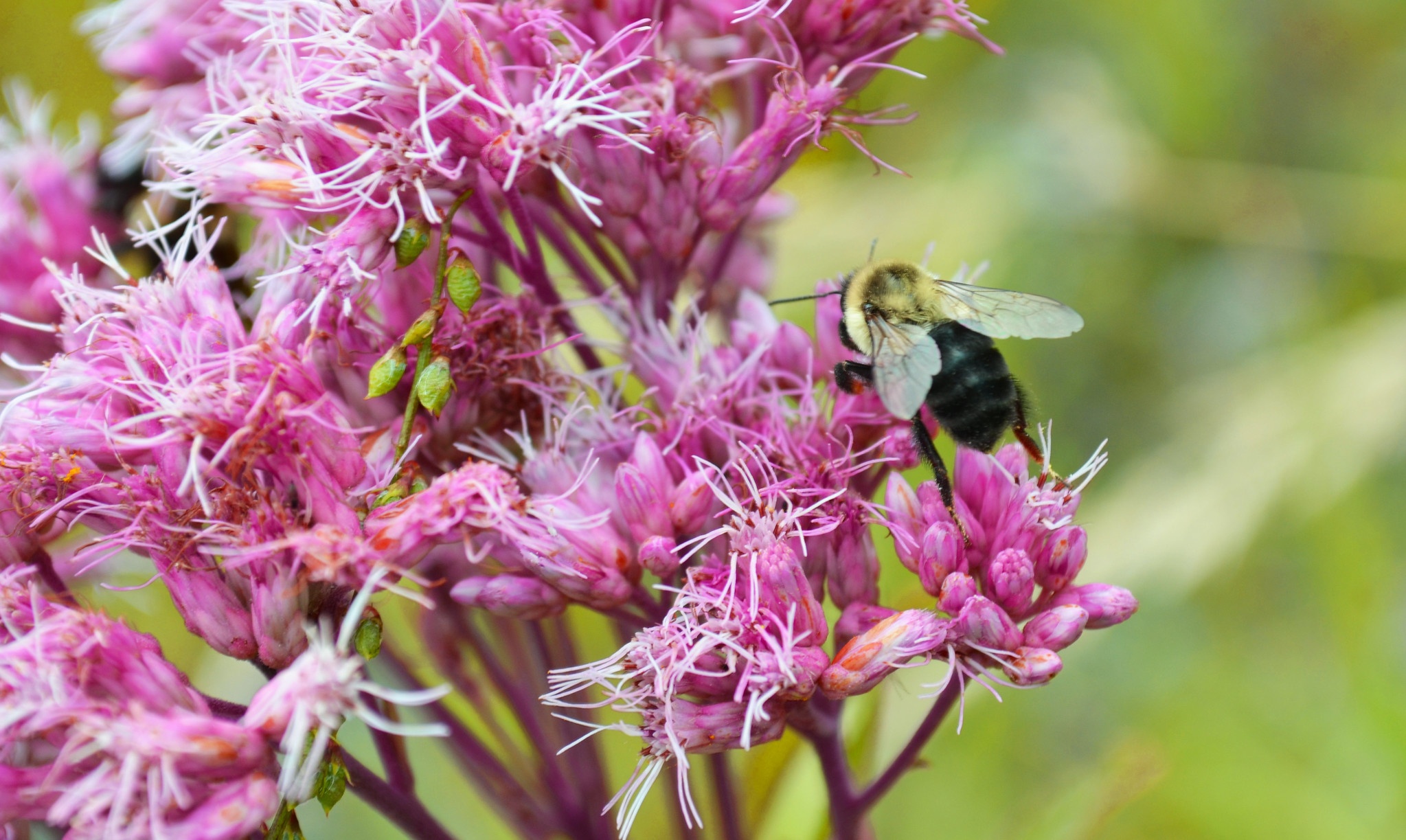
Bees are among our most important pollinators. But how much do you really know about them? Read on for fascinating facts about these busy creatures. And then find native plants that will specifically support our native bees near you directly from our Native Plant Collection.
1. Honeybees Are a Domesticated Species
The honeybee (Apis mellifera) is the iconic bee species that has become the face of the pollinator decline crisis. They provide important agricultural pollination services.
But you might not know that in North America, honeybees are not considered wildlife. They are a domesticated species, originally imported from Europe, that exist primarily in managed hives. In North America, however, there are over 4,000 wild native bee species that provide equally important pollination services in natural ecosystems as well as in agriculture and most are far less well-known or as well-studied as honeybees. Like honeybees, many native bee species are also facing steep population declines and need our help.
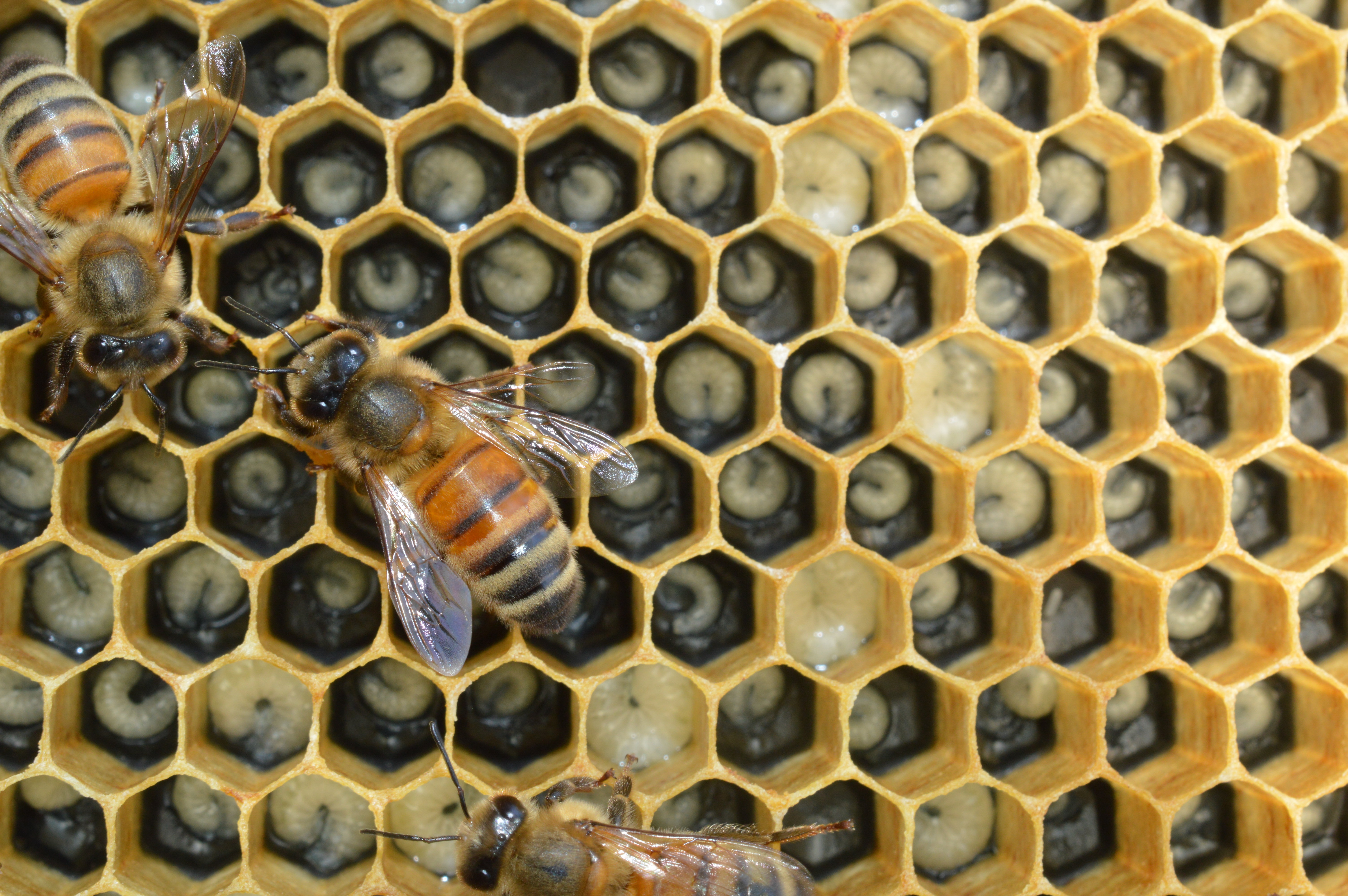
2. Some Bumble Bees Nest in Old Mouse Burrows
After honeybees, bumble bees are the most well-known group of bees. There are approximately 50 bumble bee species found across North America. Like honeybees, but unlike most other native bee species, bumble bees form hives. In early spring, queen bumble bees emerge from the ground where they spent the winter months dormant and seek out an old rodent burrow, a hole in a fallen log, or even an empty birdhouse to start their hive. In addition to pollinating wild plants, bumble bees are also commercially important, contributing to the pollination of crops such as tomatoes and alfalfa.
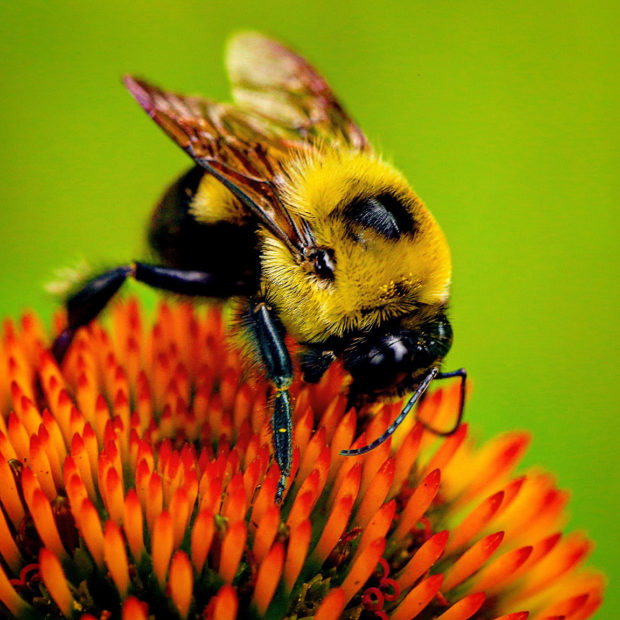
3. Most Bees Don’t Live in Hives
Domesticated honeybees and native bumble bees live in social hives, but most other native bee species are solitary. This means they don’t make honey or share in the care of their young. Instead, females of solitary bee species lay their eggs in a series of chambers in a nesting tunnel. These solitary nesters roll pollen and nectar into a ball, called a “bee loaf,” and lay one egg on it. They build a chamber wall and repeat the process until the tunnel is filled. Each egg hatches, the bee larva feeds on the bee loaf, pupates, and eventually chews out of its chamber to begin the process anew. While individual bees will nest in close proximity to each other where nesting conditions are favorable, they do not live communally.

Seventy percent of our native solitary nesting bees use tunnels in the ground to lay their eggs. The other thirty percent of solitary bees use hollowed-out plant stems or tunnels in dead trees or fallen logs as egg-laying places. Providing nesting places for native bees is as important as providing native plants to supply them with pollen and nectar. Leave patches of bare soil in your garden for ground-nesting bees, leave plant stems standing through the winter and keep dead trees or fallen logs. You can also put up “bee houses” filled with replaceable nesting tubes that provide places for native bees to reproduce.
4. Not All Bees Are Black and Yellow
Not all bees are black and yellow or have stripes. In fact, many native bees sport shiny, metallic exoskeletons and don’t look like the traditional image of a “bee” that we were taught as children. They come in colors that range from green to blue to black to red to copper, or combinations of colors. Many sweat bee species are metallic green, some with stripes and some solidly green. These ground-nesting bees were named because they do indeed like to drink our sweat, which contains salt and other minerals.
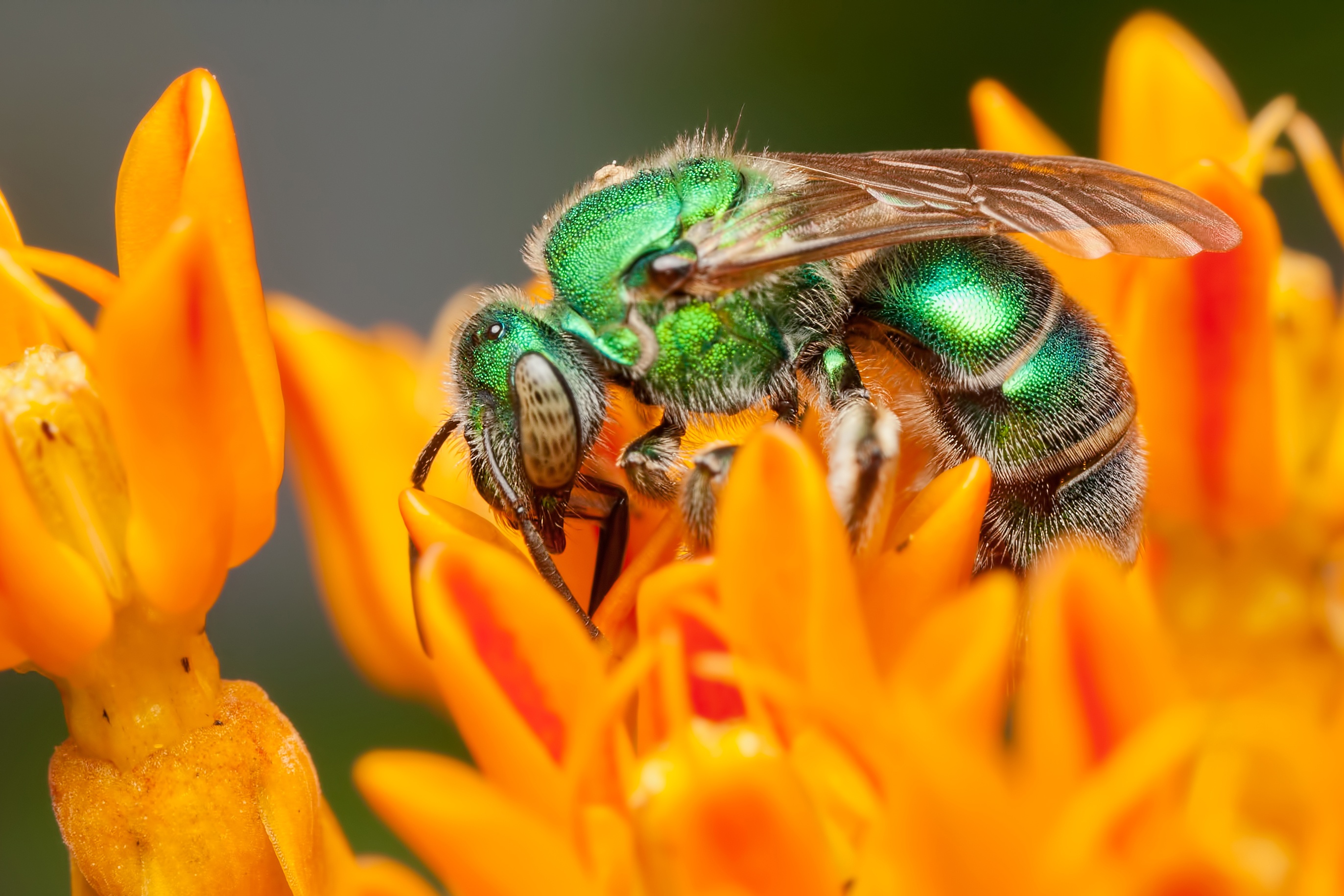
5. Some Bees Are Endangered Species
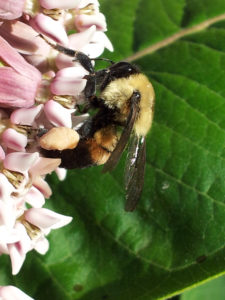
The rusty-patched bumble bee was once common across much of the Midwest and Northeast but has faced such steep population declines in recent years that it was officially listed as endangered under the U.S. Endangered Species Act in 2017. The primary threats to this species include habitat loss, pesticides, invasive species, and non-native pathogens.
Once an important pollinator of wild plants as well as crops including plums, apples, and alfalfa, the loss of the rusty-patched bumble bee over an estimated 87 percent of its range is a red flag that bee decline is a serious problem. There are also seven yellow-faced bee species native to Hawaii that have been listed as endangered.
6. Some Bees Require Specific Kinds of Flowers
Native squash bees are plant specialists. They co-evolved with the wild squash and gourd plants in North America and are dependent on the pollen of these plants as a critical food source for their larvae. Female squash bees provision their young with squash pollen in nesting tunnels they excavate in the ground. Squash bee species also help pollinate cultivated varieties of squash, pumpkins, melons, and gourds. Male squash bees gather around the blossoms of these plants looking for females, and even sleep inside the squash blossoms at night.
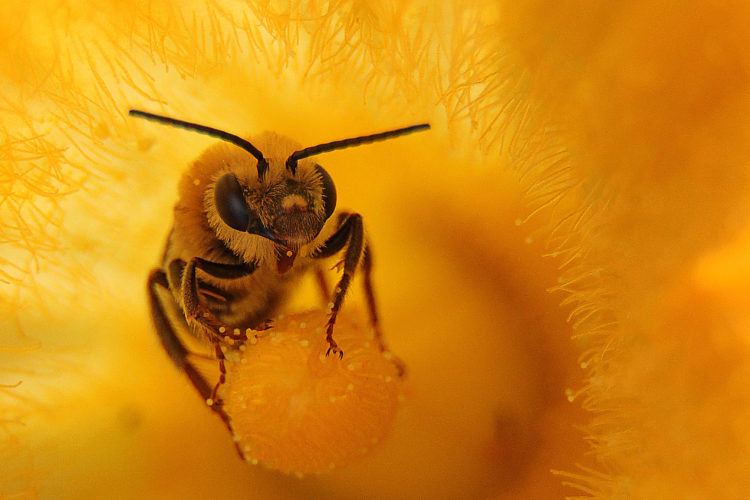
7. Native Bees Are Important To Agriculture
Honeybees do the bulk of pollination of our commercial agricultural crops that require pollination, but many native bees are important commercially as well. Bumble bees employ a special tactic called “buzz pollination” where they grab a flower and vigorously vibrate their wing muscles to shake the pollen out of the flower.
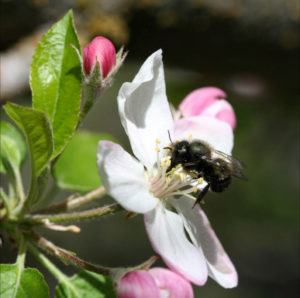
Honeybees cannot do this and can’t pollinate crops such as tomatoes, cranberries, or eggplant that require buzz pollination. The southeastern blueberry bee is an important pollinator of—you guessed it—blueberry crops. They also use buzz pollination. Orchard mason bees are extremely efficient pollinators of fruit trees (hence their name).
8. Honeybees Air Condition Their Hives
In addition to drinking flower nectar, honeybees also drink water when the temperatures rise. They transport the water back to the hive, then slowly release it while buzzing their wings, evaporating the liquid, and creating a natural form of air conditioning that keeps the hive from overheating.
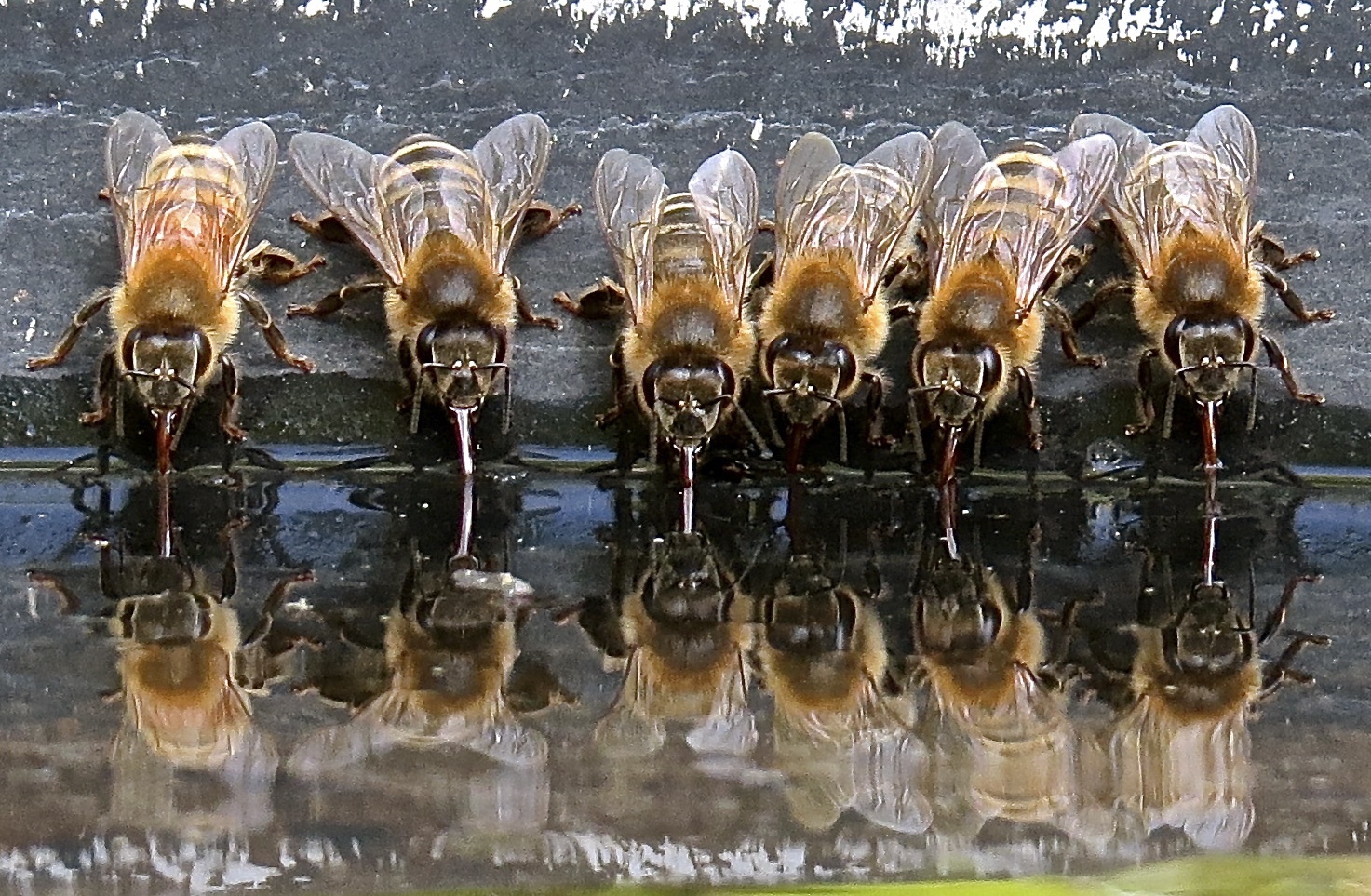
9. Bees Evolved From Wasps and Both Are Beneficial
Bees and wasps are closely related and share many similarities. In fact, bees evolved from wasps. Wasps are carnivores, hunting insects and spiders to feed themselves or their young. Bees emerged through co-evolution with flowering plants, which offered a new food source in the form of nectar and pollen.
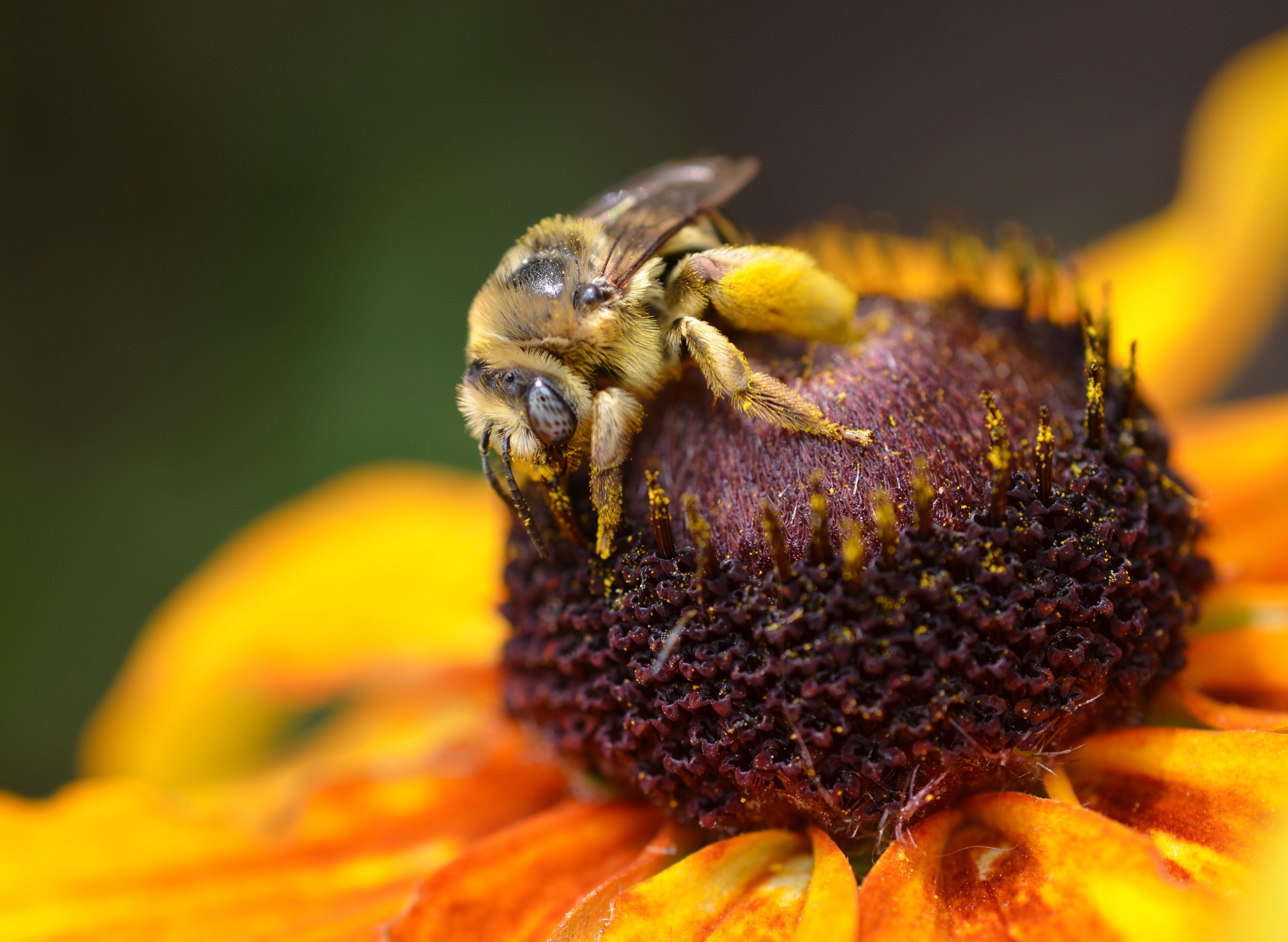
Bees evolved to give up the hunting lifestyle of wasps and only feed on these plant foods, getting their protein from pollen. Many wasps also feed on nectar and like bees also provide important pollination services, but they also constantly patrol your garden looking for caterpillars and other invertebrates—many of which are garden pests-to feed to their larvae.
Neither bees nor wasps will sting if left alone, so the best way to avoid getting stung is not to swat at them and just let them go about their business of pollination and pest control. Unlike wasps, which are smooth, most bees have furry bodies, which helps them gather pollen.
10. You Can Help Bees by Planting a Bee Garden
You can help bees by creating a wildlife habitat garden at home or anywhere in your community. Plant native blooming trees, shrubs, and wildflowers to provide bees with nectar and pollen, their natural food source. Plant densely to provide cover from bad weather and hiding places from predators. Provide nesting areas for native bees by leaving patches of soil free of plants and mulch, keeping dead trees, logs, and plant stems, or putting out a bee nesting house. Offer water by filling a birdbath with large gravel for bees to land on to get a drink. Don’t spray pesticides. When you create a bee garden, register it as a Certified Wildlife Habitat with the National Wildlife Federation at www.nwf.org/garden.
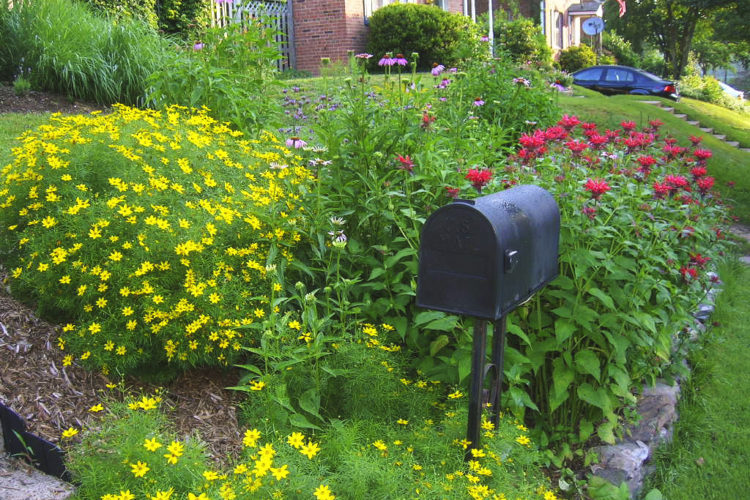
Bees love us. They pollinate our fields, orchards, and gardens. They bring sweetness to our lives. But bees are threatened and need our help. You can help save bees now. Learn how you can Garden for Wildlife, use our Native Plant Finder to get lists of native plants for your zip code or order plants that will specifically help native bees from our Native Plant Collection.






















